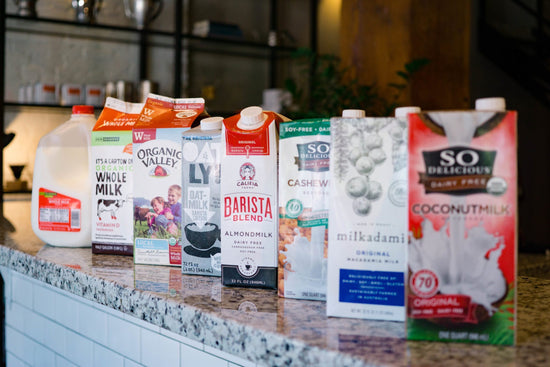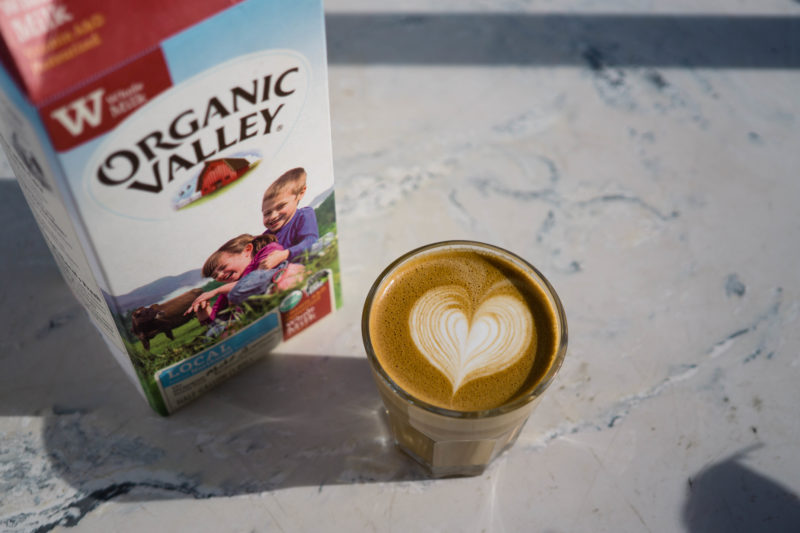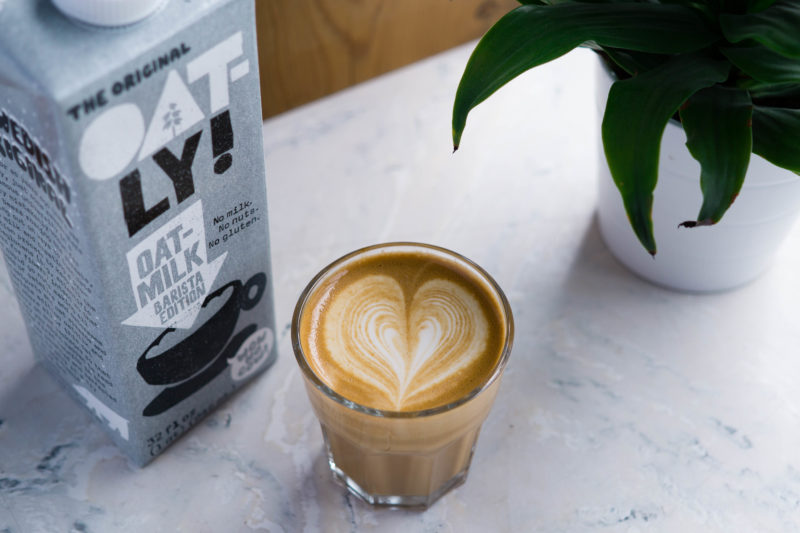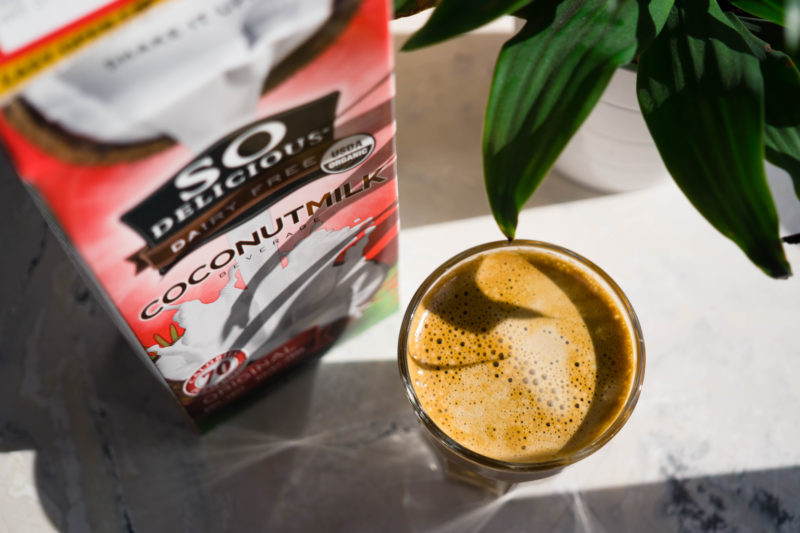Does the Type of Milk You Use Matter?

A month ago, we switched milks in our house. My ability to steam milk was decimated. I instantly felt like a rookie. I wondered: Did I choose the wrong profession? Have I lost my touch? The answer was no. I was using the wrong milk.
Whether you’re using dairy or an alternative, the type of milk you use for those lattes and cappuccinos matters to the taste and texture of the final drink. And not just the type. Of course, whole milk steams better than 2% or nonfat, as we discussed in our perfecting milk article, but from brand to brand you’ll notice significant differences. When we hear from an aspiring latte artist who is having a bit of trouble avoiding those larger bubbles, we often recommend picking up a different brand of milk on the next trip to the grocery store. For alternative kinds of milk, the results vary even more wildly.
In finding the right milk for your triple tulip latte art, you are really trying to find the perfect balance of fat and protein. Both of these molecules help to surround the tiny air bubbles, making for great foam - however, too much or too little of either can cause poor performance. Is there a perfect number? Not that we have seen. As such, we are taking this test to the kitchen to decide. We recommend that you do the same. We used various types and brands of milk that were as widely available as possible through grocery chains or Amazon to ensure you’ll have access to them as well.
What's Good
Dairy Milk
When it comes to lattes and cappuccinos we always recommend whole milk before anything else. It has just the right balance of fats, proteins, sugar, and water to make smooth microfoam without being overwhelmingly creamy. However, just like grass-fed beef versus corn-fed, the taste and molecular composition of dairy milk are significantly impacted by 1) what type of cow is being milked, and 2) what that cow is eating. So each brand is different.
We tried three different whole milks to get a clearer picture of what works best; two organic and one regular. With our Organic Valley whole milk we found that, particularly with lower power steam wands or 2 hole steam tips, it was easier to avoid large bubbles and get consistently perfect microfoam. We found the same with Horizon Organic. Beyond consistency, we also found that the organic milks tended to give us the buttery sweetness you want in a steamed milk drink. This will vary widely from brand to brand, so do your research.
 Yup. That definitely works.
Yup. That definitely works.
Almond Milk
Califa’s Barista Blend almond milk was one of the few barista-specific options we had available at our local grocery store. It’s clear upon working with Califa that it was formulated for steaming, especially compared to our experience with other almond milks. It produces a nice rich foam and stays relatively sweet, even at higher temperatures. It isn’t quite as easy to pour latte art with as whole milk or Oatly, but slightly wispier lines is undoubtedly better than no latte art at all. On taste and consistency, this is one of our top picks. If you’re already a fan of almond milk, this is the go-to.
Oat Milk
If the words "Oat Milk" sound a little bit absurd to you, you’re not alone. Seems like they can squeeze milk out of anything these days. Despite the concept of oat milk being a bit strange, Oatly Barista Edition is the most milk-like alternative we’ve found. It steams almost exactly like real milk and produces fantastic foam. The foam doesn't hang around quite as long as whole milk might, due to the lighter protein content relative to fat, but that’s just being nit-picky. This stuff is smooth, sweet, creamy, and won’t hinder you in a latte art throwdown.
Oatly isn't available in all grocery stores so, you’ll likely have to order through their website or Amazon.
 Holy oat art!
Holy oat art!
Macadamia Milk
When we saw a product called “Milkadamia” that claimed to be sourced from free-range trees we rolled our eyes just as any non-"head up your-arse hipster" should. What exactly is a free range tree? That said, it is pretty good. We tried the standard version as well as the unsweetened version. It’s worth noting, there is a “Latte de Barista” version of the milk specifically for steaming, which we assume will be even better. Even with the regular unsweetened milk, we were able to get some decent latte art and good foam. The standard version performed about the same but tended to produce more substantial bubbles. There were some fans of the unique taste, but most us here at Clive found the other options a bit more palatable.
Soy Milk
The Silk Original milk works well for coffee. It produces fairly dense foam with a nice creamy texture. While the foam is pleasant to drink it wasn’t the easiest to pour latte art with. Generally, we ended up with a blob of foam plopping into our cup at the end of the pour, but it was very delicious.
What's Bad
Cashew Milk
Cashew milk has been a rising trend with Portland coffee shops as of late, with many of them making their own cashew milk in-house. We tried out some store-bought cashew milk and didn’t get good results. It produced relatively thin foam that dissipated within a minute or two after pouring, and the milk tasted relatively bitter and flat.
Coconut Milk
One word - terrible.
 Houston?!? We have a problem.
Houston?!? We have a problem.
Hemp Milk
While other milks get close to behaving like a real dairy product, hemp milk felt like steaming water. It was nigh impossible to get anything resembling microfoam.
Conclusion
There’s no accounting for taste, so we’re not going to create some kind of milk ranking system. That said, if you’re looking for terrific milk-drink consistency there are a few front-runners. You can’t do better than organic whole milk, but if you’re looking to pour tulips and rosettas while leaving the cows alone we recommend either Oatly or Califa Barista Blend almond milk. These two produced rich, lasting microfoam more easily than the other options by a pretty huge margin, making them perfect for latte art and an excellent companion to your espresso.